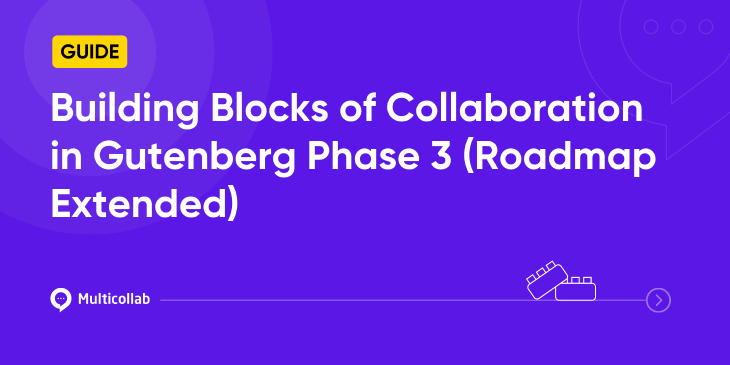Table of Contents
WordPress is a popular platform for content creation, yet editorial teams often grapple with challenges in producing engaging and high-quality content. These hurdles range from miscommunications and delays in feedback to inefficient content review and approval processes, often leading to compromised content quality and missed deadlines.
However, these issues aren’t insurmountable; the solution lies in effective editorial collaboration.
For instance, when team members can review, comment, and approve changes in real-time within the content draft itself, the turnaround times decrease, and the content quality significantly improves.
In this article, let’s delve into the importance of WordPress editorial collaboration and how you can use it to transform your content production process.
The Importance of Editorial Collaboration in WordPress
Editorial collaboration in WordPress is a comprehensive and cohesive approach that involves brainstorming content ideas, developing robust strategies, assigning roles, managing workflows, proofreading, editing, giving and incorporating feedback, and finally, approving and publishing the content.
In other words, it’s the backbone of a successful content creation and management workflow.
Digital editorial team collaboration provides an opportunity for multiple pairs of eyes to evaluate every piece of content, ensuring the elimination of errors, the addition of diverse perspectives, and the improvement of the overall content quality.
Let’s take an example: suppose a piece on “Latest WordPress SEO Trends” is being prepared. With editorial collaboration, an SEO specialist can ensure the use of relevant keywords, a seasoned writer can focus on engaging storytelling, and an editor can weed out grammatical errors and polish the content, all working within the same document in real time.
The resulting content piece is likely to be of high quality, well-optimized for search engines, and highly engaging for the readers, thus increasing its chances of success.
Additionally, efficient editorial collaboration in marketing saves time and reduces effort in both the short and long term. When everyone involved in the process can interact and make necessary changes within the same platform in real time, it streamlines the workflow, eliminates redundant tasks, and accelerates the content production process.
However, as straightforward as it might seem, implementing successful editorial collaboration in WordPress isn’t always smooth sailing.
Common Challenges in WordPress Editorial Collaboration
The WordPress content editorial process, ironically, takes place outside WordPress. Many teams prefer to use document collaboration tools like Google Docs and Microsoft Word due to their simplicity and affordability.
However, dependency on these tools often makes the WordPress editorial collaboration inefficient in three ways:
1. Slow Content Production Process Due to Third-Party Tools
Typically, a draft is first created in a document collaboration tool such as Google Docs or Dropbox Paper. It is then shared with other members for feedback and revisions. Once all suggestions are incorporated, the content is moved to WordPress for final review and publishing.
This process, although effective in theory, is quite time-consuming in practice. Let’s consider an example: if an author finishes a draft and sends it to the editor for feedback, they need to wait until the editor reviews the draft, makes changes, and sends it back.
Further revisions by the author or other stakeholders mean additional wait times. Each cycle of this back-and-forth not only slows down the content production process but can also lead to miscommunications and loss of context.
2. Limitations of Text Editors Like Google Docs
While Google Docs and similar tools are excellent for text-based collaboration, they fall short when it comes to multimedia and dynamic content. In an age where content such as videos, image carousels, and social media feeds are key to increasing content engagement, this limitation can be a significant drawback.
For instance, suppose a content piece requires the inclusion of an instructional video or an image carousel for better comprehension. In Google Docs, these elements can’t be added, and placeholders are generally used instead.
But this means the draft in Google Docs is different from the final draft in WordPress, potentially leading to confusion and misalignment among team members.
3. Potential Data Security Issues
WordPress editorial and publishing teams often need to give external teams unrestricted access to their organizational files for their review and feedback. This exposure can potentially lead to unintentional data breaches.
For instance, if a company is collaborating with an external editor or a freelance writer, they need to share the Google Docs link, potentially giving them access to other documents in the shared folder. This can compromise sensitive organizational data.
The above challenges can lead to longer production timelines, potential loss of content quality and context, and increased risk of data security breaches. The good news, however, is that these challenges can be mitigated with the right collaboration tool.
Multicollab: Enable Real-Time WordPress Editorial Collaboration on WordPress
Multicollab is a collaboration plugin that enables Google Docs-style co-editing within the WordPress block editor to streamline and enhance the editorial process for content teams.
The tool allows WordPress teams to exchange feedback on all kinds of content directly within the WordPress Gutenberg Editor, just as they do with third-party content collaboration tools.
As the entire editorial process is on WordPress, external stakeholders can share their suggestions directly in the WordPress editor, so you don’t need to give them unrestricted access to your organizational files. Additionally, Multicollab makes it simple and easy for you to manage permissions.
Experience the simplicity and efficiency of real-time co-editing on WordPress with Multicollab today.
FAQs:
Collaborative editing allows multiple people to work on a document simultaneously. It typically involves real-time co-editing, inline comments, and notifications. Tools like Multicollab make this possible directly within WordPress, streamlining the content creation process.
An example of collaborative writing could be a WordPress content team creating a blog post. The authors draft the text, editors review and suggest changes and external stakeholders provide their feedback. Collaborative tools such as Multicollab make the workflow efficient.






